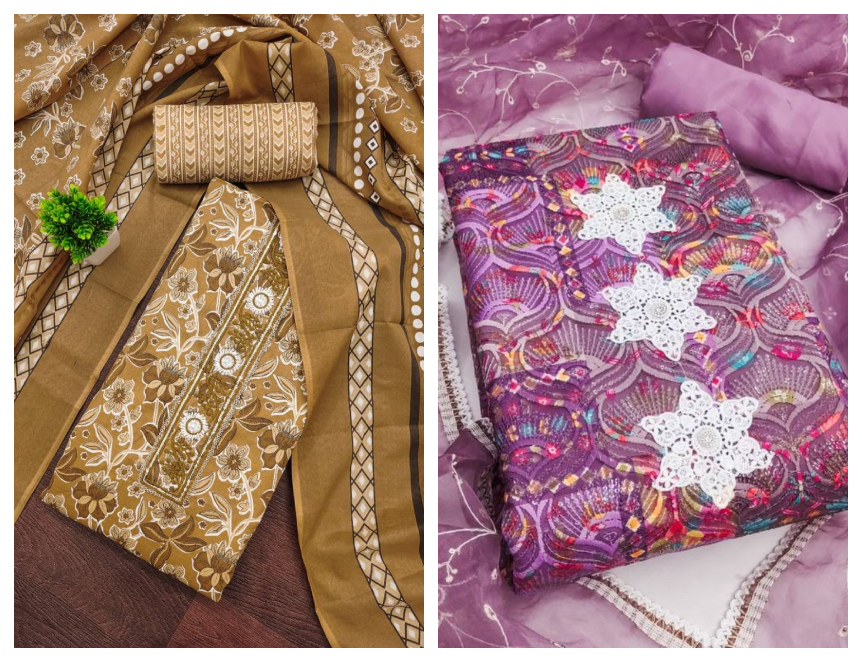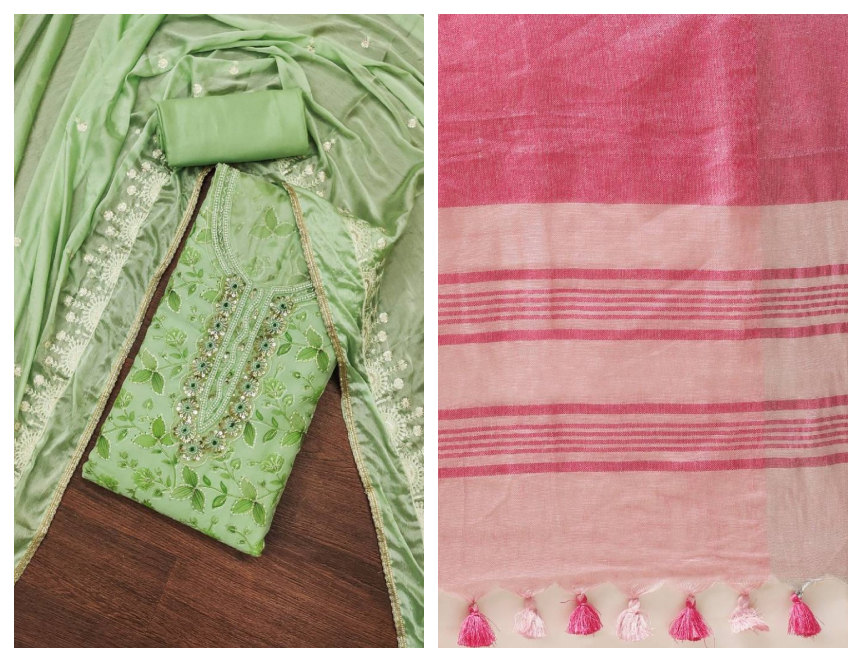Why is it important to Identify Fabrics?
Identifying fabrics is an underrated skill that every fashion lover should hone. After all, dupes and mislabels are common in the marketplace. This is especially true for luxe fabrics such as silk and velvet. Since you are paying such a high price for them, it is important to check the authenticity of the same. You don’t want to end up with the wrong fabric when you are expecting something else. Hence, identifying fabrics is paramount.
What Methods Can You Use to Identify Fabrics?
There are various ways that you can identify fabrics; however, the most common are the visual and burn tests. You can take in the appearance as well as the feel of the fabric. For eg, Cotton feels soft and slightly rough. It has a matte appearance and wrinkles easily. On the other hand, silk feels smooth, cool, and drapes easily. Its appearance has a natural sheen, and it has a fine texture. Another popular way to determine the fabric is by doing the burn test. Take a small lump of fibres from the fabric and hold it against a heat source. You can observe how the fibre burns. Cotton burns quickly and emits a yellow flame. However, silk burns slowly and self-extinguishes
How To Detect Fabrics by Touch?
The touch test is one of the most trustworthy and commonly used methods to identify a fabric. It involves running through the surface of the fabric using your hands. Different fabrics feel different to the touch.
- Cotton: Cotton feels soft and breathable; however, it can be a bit rough to touch.
- Silk: Silk is renowned for its smooth texture. Real silk also feels cool to touch.
- Wool: Wool is warm as well as soft.
- Linen: Linen is famously crisp to the touch, and it also feels textured.
- Polyester: This man-made fabric is smooth and can feel slippery as well.
- Viscose: This fabric feels soft and silky.
How to differentiate fabrics by look?
Visual inspection can tell you a lot about the fabric if you look closely. Several differences in the visual characteristics of the fabric allow you to tell them apart easily.
- Polyester: The polyester fabric is extremely shiny and wrinkle-resistant.
- Cotton: Cotton is well known for its matte appearance and wrinkles easily.
- Silk: Naturally shiny and featuring a fine texture, this fabric can be easily identified.
- Viscose: While viscose is also shiny, it is not more so than silk. It also drapes very well.
- Wool: Wool is extremely elastic and has a fuzzy feel to it.
- Linen: Linen wrinkles quickly and has natural slubs covering it.
How does the burn test help in distinguishing fabrics?
Doing a burn test is another easy method of differentiating fabrics. Simply pull off a few fibers from the fabric and hold them over a flame. Not all fabrics burn equally, thus helping you separate them out with ease.
- Cotton and Linen: These natural fibers burn quickly and emit a yellow flame. The burning smells like paper, and the fiber leaves behind soft gray ash.
- Silk and Wool: Silk and wool burn slowly and often self-extinguish. They smell like burnt hair, and their residue is in the form of a small black bead.
- Polyester and Nylon: These are man-made fabrics that are spun using chemicals. When burnt, they melt and emit a chemical odor. Their remnants are usually in the form of a hard plastic bead.
- Viscose: Viscose tends to burn quickly and has a paper-like smell to it. It leaves behind a light ash residue.










